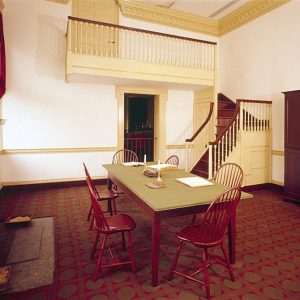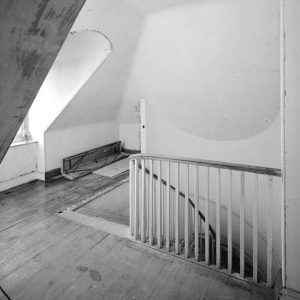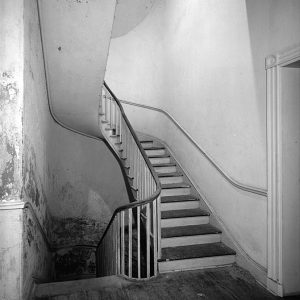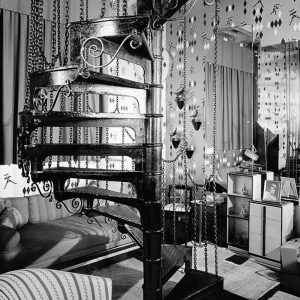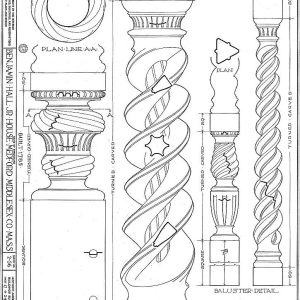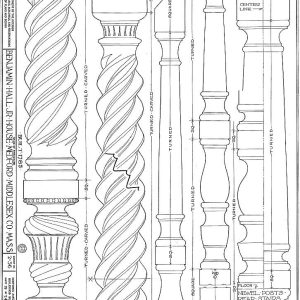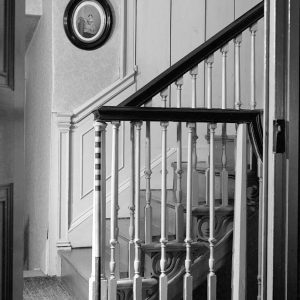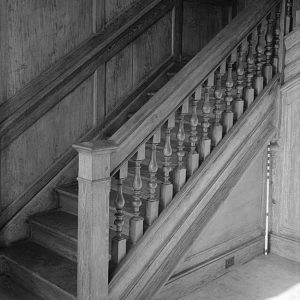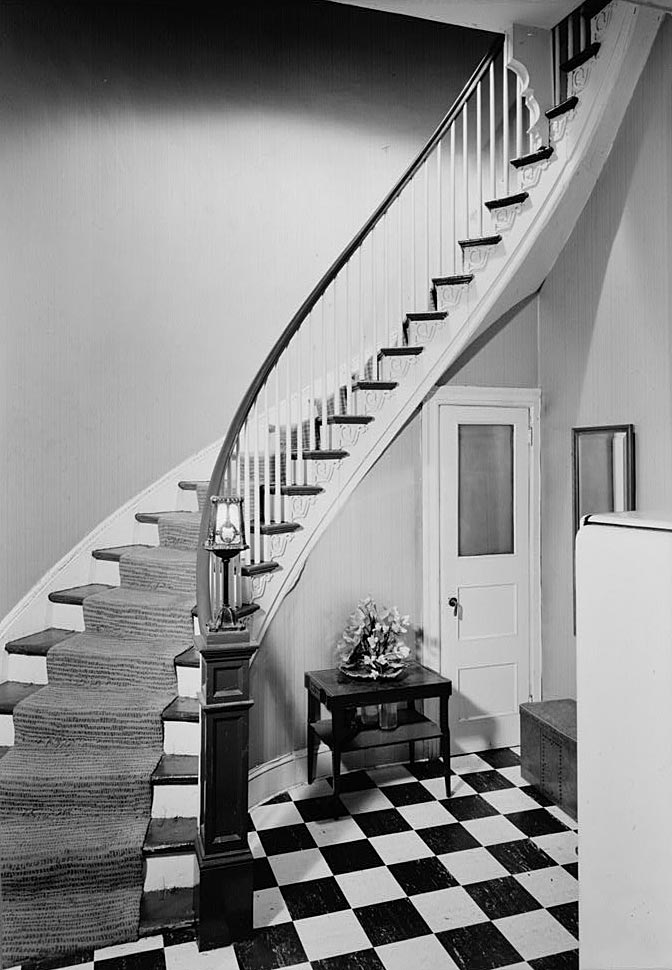Stairs and Balusters
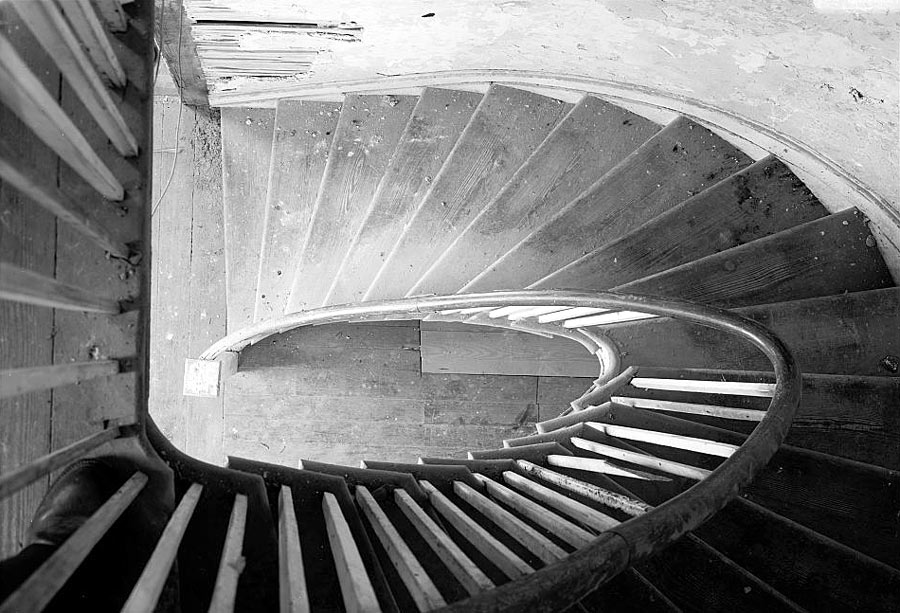
Elliptical stairway – every step has a different shape
Stairs are the first thing that guests see when entering a private residence or public building. For this reason, staircases can be used to publicly display the owner’s social standing and wealth. But in even the most humble homes, the newel post on the main floor usually has some kind of decoration.
Seven Basic Stair Forms
Straight Stairs
no images were found
Straight-run stairs provide the quickest route between floors. A landing is required by most building codes to break up a long stairway into two segments – typically 12 steps at most, with a given rise and run. Tapered stairs are used in grand entrance hallways by making each step wider as you approach the lower floor.
Dogleg Stairs
L-shaped, dogleg stairs or “quarterpace” stairs have two segments which meet at an intermediate landing between floors. The upper segment continues up from the landing at a 90 degree angle to the other stair leg. The lower segment has more steps to provide clearance below the landing for a ceiling in a hallway. Double-dogleg stairs are designed with a single stair segment from the lower level to the landing, and two separate legs at 90-degrees to the left and right side continuing to the upper level.
Return Stairs
no images were found
